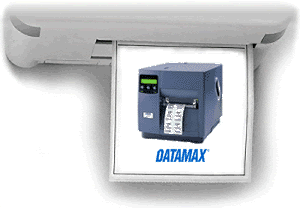Direct Thermal and Thermal Transfer Printing Systems
 Regardless of what your labeling application may be, there is a printer model that will satisfy or surpass your requirement. LSi sells Direct Thermal and Thermal Transfer Printers manufactured by three of the world leaders in the industry as well as many other recognized brands.
Regardless of what your labeling application may be, there is a printer model that will satisfy or surpass your requirement. LSi sells Direct Thermal and Thermal Transfer Printers manufactured by three of the world leaders in the industry as well as many other recognized brands.
In addition to offering a complete line of label and tag printer models, LSi also provides label, tag, and ribbon media for support of most Direct Thermal and Thermal Transfer Printer models found in the US.
Available through LSi’s Service Department, which is staffed with Certified Repair Technicians, Label Specialties, Inc. provides parts, printheads, repair services, and service contracts not only for the products we sell, but also most printer brands and models found in the US.
If barcode printing is a required application, Label Specialties, Inc. is a “Partner Select” distributor for Symbol Technologies and offers a full line of devices for barcode scanning and verifying from Symbol as well as many other widely known manufacturers.
The following links are provided for LSi’s overview of printer models manufactured by DATAMAX, SATO, and ZEBRA, which represent three of the finest printer manufacturers in the world.

Basic Information about Thermal Transfer vs. Direct Thermal Printing
Thermal Transfer:
Thermal Transfer printing requires not only the label or tag material, but also the additional expense of purchasing a Thermal Transfer Ribbon in order to successfully print the label or tag material.
The Thermal Transfer print is created when the heat from the printhead is applied directly to the ribbon. The material on the face of the ribbon is then melted, or transferred to the face of the label or tag material. This method of printing is relatively easy on printhead wear, as the back of the ribbon is very smooth and protects the printhead from the increased friction and abrasiveness of the face material. Because Thermal Transfer printing uses a ribbon, it also opens up other options related to the use of different types of materials and the choices of different types of ribbons.
Direct Thermal:
Direct Thermal printing requires no additional cost of purchasing a ribbon. Direct Thermal imaging occurs when the heated printhead comes in direct contact with the Direct Thermal label, tag, or receipt material. There is an invisible dye coating on the face of the Direct Thermal material that turns color, generally black, as heat is applied to it. Because of this, no ribbon is required.
One might think that this would be a less expensive method of printing because the additional cost of purchasing ribbons is not necessary. This is not always correct. Direct Thermal printing may degrade the printhead faster than with the thermal transfer method. It may not be necessary to purchase ribbons, however replacing printheads may be necessary more often, and printheads are expensive.
Direct Thermal labels, tags, and receipts are typically used for applications that do not require the printed information to last past a few months. Direct Thermal print will fade over a period of time, but it is reasonable to expect printed Direct Thermal information to last about 6 months, or longer depending upon conditions the printed material is subjected to. Conditions involving any heat, or possible light, may adversely affect the printed material imaging.
Conclusion:
Many believe that there is little, or no difference in the overall cost of operation between Direct Thermal printing and Thermal Transfer printing and any implied difference in cost is dependent upon the demands of the printing application and user requirements.
Regardless of the printing method, always store label and tag inventory in a cool, dry location.
